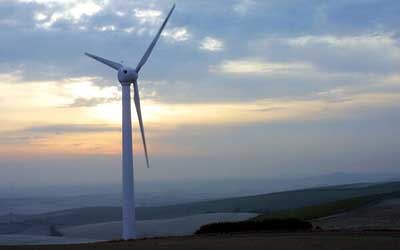Date : 26/05/2023
Relevance: GS-3: Science and Technology- developments and their applications and effects in everyday life: Conservation, environmental pollution and degradation, environmental impact assessment.
Key Phrases: Fossil Fuel, NCAER, Green Bonds, Sustainability Bonds, Climate Change, Carbon Emissions, EMDEs, Polluter Pays, Multilateral Development Banks.
Context:
- Huge sums of capital are needed for a transition from fossil fuel-based to non-fossil fuel-based production and India has done well to create an enabling framework for green finance.
Introduction:
- The urgency to address global warming and transition to a sustainable,
low-carbon future has never been more critical.
- While the technological solutions required for this transition are available, the key challenge lies in mobilizing the necessary financial resources.
- In a panel discussion at the National Council of Applied Economic
Research (NCAER), the role of finance in containing global warming was
explored.
- Green bonds and guarantees serve as crucial tools in facilitating the required investments and combating climate change.
Legacy and Responsibility
- It is crucial to recognize that global warming is not a consequence of present-day emissions alone. The cumulative emissions of carbon dioxide (CO2) over centuries have driven the current state of global warming.
- Startlingly, just six countries – the US, China, Russia, Germany, UK, and Japan – account for 64% of these cumulative CO2 emissions since the industrial revolution.
- These countries bear a moral responsibility for their significant contribution to global warming. However, the fulfillment of this responsibility has been elusive in global geopolitics.
Addressing the Financing Gap
- Emerging market and developing economies (EMDEs) have long demanded the application of the "polluter pays" principle globally, akin to its implementation within countries.
- Unfortunately, this demand has gained little traction. Given the pressing timeline, massive investments must be made within the next 5-7 years to prevent global warming from exceeding 1.5°C above pre-industrial levels.
- However, the available funding falls far short of the required amount. Estimates suggest that an annual investment of approximately $5 trillion in clean energy projects is necessary for effective mitigation, with EMDEs (excluding China) requiring $1 trillion of that amount.
- Yet, the annual funding available this year stands at only $1.4 trillion, leaving a significant gap. Multilateral development banks (MDBs) alone cannot bridge this financing gap, and private sector involvement becomes crucial.
What is a Green Bond?
- A green bond is a type of fixed-income instrument that is specifically earmarked to raise money for climate and environmental projects.
- These bonds are typically asset-linked and backed by the issuing entity’s balance sheet, so they usually carry the same credit rating as their issuers’ other debt obligations.
- Green bonds may come with tax incentives to enhance their attractiveness to some investors.
- The phrase “green bond” is sometimes used interchangeably with “climate bonds” or “sustainable bonds.”
- Green bonds are part of a larger trend in socially responsible and environmental, social, and governance (ESG) investing.
The Role of Green Bonds and Allied Instruments
- Private investors primarily seek profitable ventures, prompting the
question of whether climate financing can generate sufficient returns,
adjusted for risk, to attract around $5 trillion in private funds annually.
- Here, the emergence of green bonds and related instruments such as transition bonds, sustainability bonds, and sustainability-linked bonds becomes pivotal.
- Although this class of thematic bonds, including social bonds, originated in 2007, it took time for the market to fully embrace them.
- Over the past five years, the issuance of these assets has experienced a
staggering annual growth rate of 55%, reaching a total of $3.5 trillion.
- However, given that the global bond market is estimated at $130 trillion, there is ample room for further expansion.
- Green bonds, in particular, have led this asset class's growth, commanding a significant premium. It is projected that the volume of green bonds could reach $5 trillion by 2025.
Bridging the Gap for EMDEs
- While the impact of global warming will disproportionately affect EMDEs compared to developed economies, only 10% of green bonds and other thematic bonds have flowed into these countries, excluding China.
- MDBs can play a crucial role in leveraging climate finance by utilizing their limited funds to provide insurance and risk guarantees. This approach can unlock investments many times larger than their own resources.
- To attract foreign investors, EMDE governments must develop robust green bond frameworks and taxonomies, along with strengthening environmental, social, and governance (ESG) mandates.
- India, for instance, has made strides in this direction by issuing a green bond framework in November. Additionally, implementing other supportive measures has enabled the successful issuance of two local currency bonds that have been trading at a premium.
Conclusion
- As the need for large-scale investments to combat global warming
becomes increasingly urgent, green bonds and guarantees offer promising
solutions.
- These financial instruments have experienced remarkable growth in recent years, and their potential to attract private funds for climate action is substantial.
- However, the flow of these investments to EMDEs remains limited, highlighting the need for strategic intervention by MDBs and governments.
- By leveraging their resources and providing risk guarantees, MDBs can catalyze climate finance at a scale necessary to address the challenges faced by developing economies.
- Simultaneously, governments must create enabling frameworks and mandates
to attract private investors and ensure the successful deployment of green
bonds.
- With concerted efforts, these key tools can contribute significantly to containing global warming and steering the world towards a sustainable future.
Source: Mint
Mains Question:
Q. What role do you think green bonds and guarantees can play in addressing the financing gap for climate action and containing global warming? (150 words)







